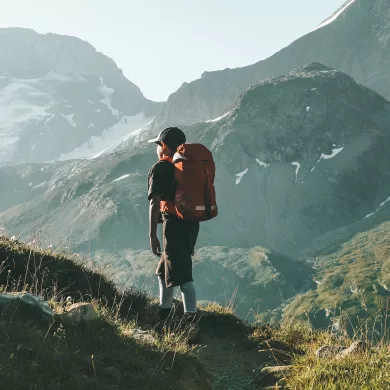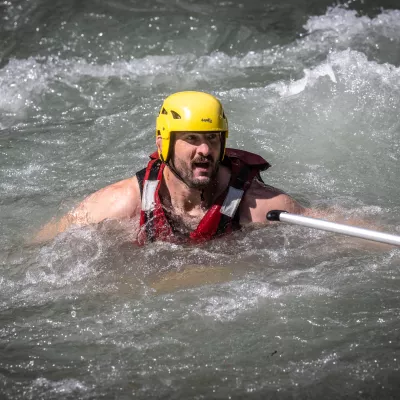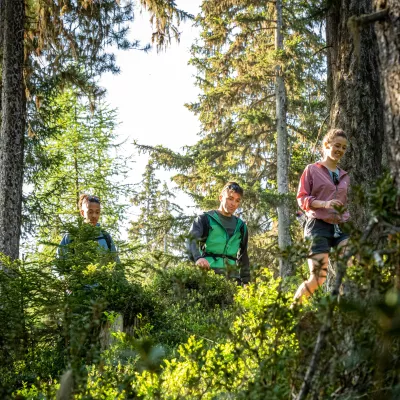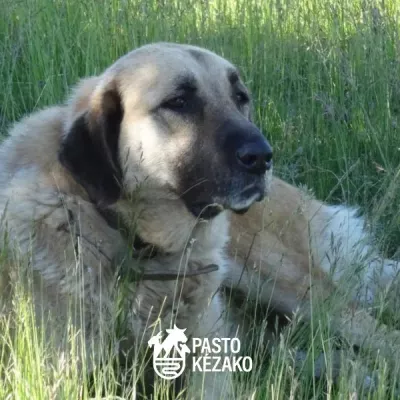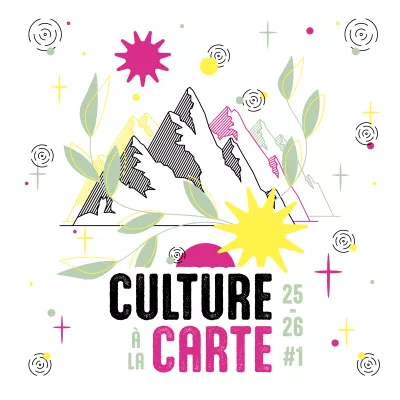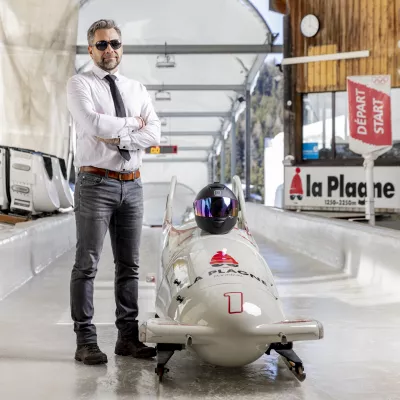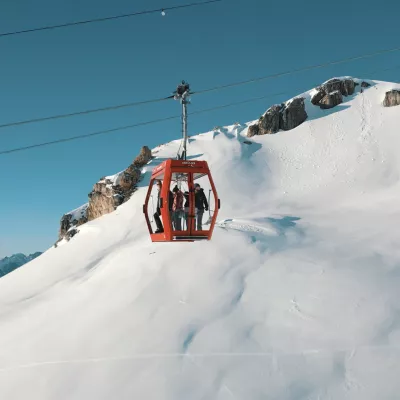You have studied the route carefully, tried a variety of walking shoes, remembered walking poles to relieve your knees… Now it’s time to prepare the rest of the family’s backpacks, including the kids’ ones! Ideal weight, contents, distribution… become a backpack expert in just a couple of minutes reading.
Estimate the maximum weight your child can carry on a hike
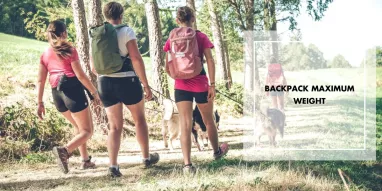
The contents of your child’s backpack mainly depends on the weight they can carry, which in turn depends on how much they weigh themselves!
It is generally considered that the weight of your little one’s bag should not exceed 10 to 15% of their weight. For example, a 3 or 4-year-old weighing 15 kg can carry a bag of about 1.5 kg (15 kg x 10%). An 8 year-old who weighs 25 kg will be able to carry about 2.5 kg on their back. A teenager who weighs 40 kg can comfortably carry a backpack of between 4 and 6 kg.
With that in mind, you just need to put everything you need to take on the table (see below) and play the game of communicating vessels between their bag and your own ;) Try not to overload your own bag, as you will probably have to carry theirs as well when they start to get tired.
Essential, useful and motivational items to go in your kids’ backpacks
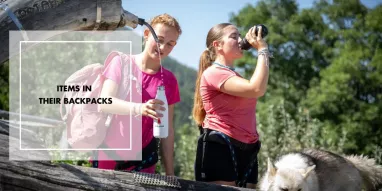
Children are usually delighted to carry their own Postman Pat, Spider Man or Frozen backpack, to be just like the grown-ups…but you might have to stop them from putting half of their toys in!
The first thing to put in the bag, for any age, is water (it’s even better in a stylish La Plagne water bottle and will stay cold!). You can fill it more or less depending on your child’s weight (see above) and carry the rest in your own backpack. Be careful, water is quite heavy: 1L of water = 1 kg! Share the load across the adults’ bags so no-one ends up with backache.
Another essential is a snack for when the kids get hungry… or to keep them going when they start to get tired (“at the next big rock, we’ll stop for some Beaufort cheese!”). Our advice is to keep something back in your own bag in case you have to have several stops on the way back… Some biscuits or dried fruit in a Tupperware can save your hike!
Add a light, compact windbreaker (even if the sun is shining, the weather can change quickly in the mountains!), a comforter in case of a tantrum (“no, sweetheart, even if it is a lovely stick, we’re not going to take it home…”), binoculars or a camera for older children, or a mini-guide to help you identify different animal tracks. And you are ready to go!
What should go in the adults’ backpacks?
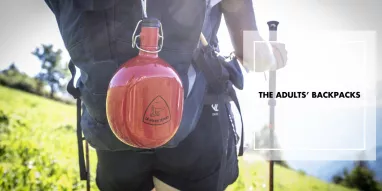
Take the same things as the children (maybe not a comforter, but who are we to judge?): water (for yourselves and some extra for the rest of your tribe), a snack to get your strength back and a windbreaker.
In addition to all that, don’t forget:
- Sunscreen, to be applied liberally and often on both adults and children
- A jacket (soft-shell, fleece) for everyone if you plan to go high (the view up at Live 3000 is insane, you really shouldn’t miss it!). Put them in the backpacks of the older children and adults to distribute the load
- A mini 1st aid kit for any scrapes and bruises that cannot be soothed with a magic kiss (disinfectant, plasters, eye wash to rinse away dust, tweezers to remove splinters, etc.)
- A charged phone (for photos… as well as your safety)
- Sunglasses and baseball caps or sunhats (if your kids are not already wearing them when you set off)
- A bag to put your rubbish in (picnic leftovers, wrappers, paper tissues, etc.) Nothing should be left on the footpaths, not even an apricot stone)
- Bonus: a swimming costume in case your hike takes you to the swimming lake at Les Versants d’Aime! The good news is that you would not even have to walk back since there are shuttle buses to take you back to the altitude villages.
Don’t forget the most important thing: a good dose of flexibility!
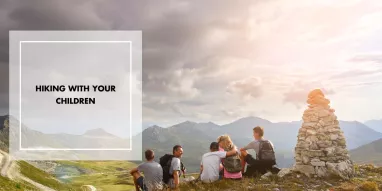
Going for a 3, 13 or 23 km hike with your kids is a real adventure! On some days, they will be totally up for it and you will have a great time sharing your love for nature with them. On other days, the tears will start in the first 500 metres (not enough sleep, a preference for the swings, an unexpected encounter with a daring grasshopper on their leg…).
To maximise your chances of success:
- Choose the routes that are the most likely to interest your children (with animals along the way, or a swimming lake to head to…). A great idea is to go with a mountain guide to draw their attention to the unusual plants and creatures that you find along the way.
- Take your time and learn to curb your ambitions if things don't go according to plan: you only covered 200 metres in an hour with your youngest? So what! If he's had a great time spotting every ant, every flower and every marmot over that short distance, it’s a win.
Enjoy hiking with your family!

